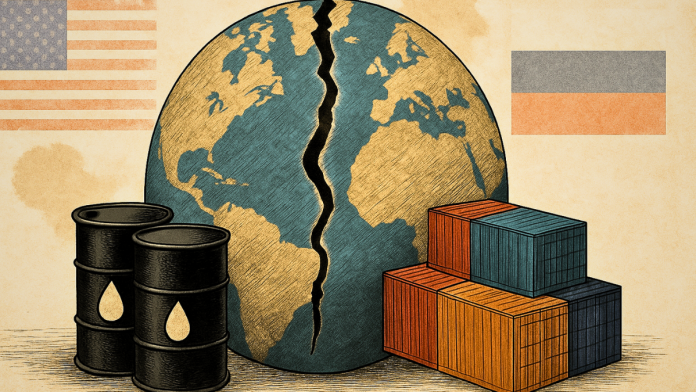As President Donald Trump moves to apply fresh pressure on countries that continue to buy oil from Russia, concerns are growing at home. His latest plan to enforce steep tariffs on nations like India and China is aimed at cutting off Russia’s energy revenue to push for peace in Ukraine. But experts warn that the move could end up doing serious damage to the American economy, affecting prices in stores, business costs, and even what drivers pay at the pump.
Trump’s New Deadline Targets Countries Buying Russian Oil
Earlier this year, Trump gave Russia a 50-day deadline to agree to peace in Ukraine or face economic consequences. That timeline has now been moved forward, with the new deadline falling this week. As part of this plan, Trump is threatening secondary tariffs — penalties on countries that do business with Russia, especially through oil.
A White House official confirmed that Trump’s envoy, Steve Witkoff, is traveling to Russia this week to deliver the message directly. The spotlight is now on India and China, two of Russia’s top oil customers, and also two of America’s biggest trade partners.
India imports 36% of its oil from Russia — the highest share of any country — while 13.5% of China’s oil imports also come from Russia, up from 7.7% before the war in 2022. These growing numbers make both countries key targets of Trump’s strategy.
American Consumers and Businesses Could Take the Hit
In 2024 alone, the United States imported over $526 billion worth of goods from India and China combined. These goods include everything from electronics and smartphones to clothing, furniture, and kitchenware.
Raising tariffs on those imports — especially from China, where existing tariffs already sit at around 30% — could make everyday products more expensive for Americans. Giovanni Staunovo, a commodity analyst at UBS Wealth Management, pointed out that items like iPhones could see price hikes, frustrating U.S. shoppers.
There’s also concern that U.S. companies relying on supplies and products from these countries will face higher import costs. That would cut into their profit margins, possibly leading to job cuts, production slowdowns, or even further price increases for customers.
Clayton Seigle, senior fellow in energy and geopolitics at the Center for Strategic and International Studies, warned that such tariffs could “lead to more inflation” and increase financial pressure on American households. He noted that high tariff levels may end up harming the U.S. just as much as the countries they’re intended to punish.
Global Oil Supply Shock Could Drive Up Prices
Adding tariffs on countries buying Russian oil could also shake up the global energy market. Russia exports around 7 million barrels per day of crude oil and refined products — about 5% of total global consumption. Removing such a large amount from the market could cause oil prices to rise quickly.
⚖️ Debanked for mining bitcoin? Trump signs order to punish banks for financial bias
That could hurt the U.S., even though it’s one of the world’s largest oil producers. America still imports oil and is tied to global pricing. A spike in global oil prices could mean higher gasoline prices at home — hitting truckers, travelers, and everyday commuters.
Kieran Tompkins, senior commodities economist at Capital Economics, explained that removing even part of Russia’s oil from the global market increases the risk of rising prices. If India and China are forced to reduce their Russian oil purchases, the market could tighten fast.
Some analysts believe that Trump may end up enforcing smaller tariffs — in the range of 10% to 30% — rather than the full 100% he threatened. Clayton Seigle suggested that such levels would still be effective in encouraging countries to diversify their oil supplies while avoiding major blowback to the U.S. economy.
But if the harsher tariffs go ahead, experts say the costs could show up in American fuel bills, higher grocery and retail prices, and pressure on businesses across multiple industries.


